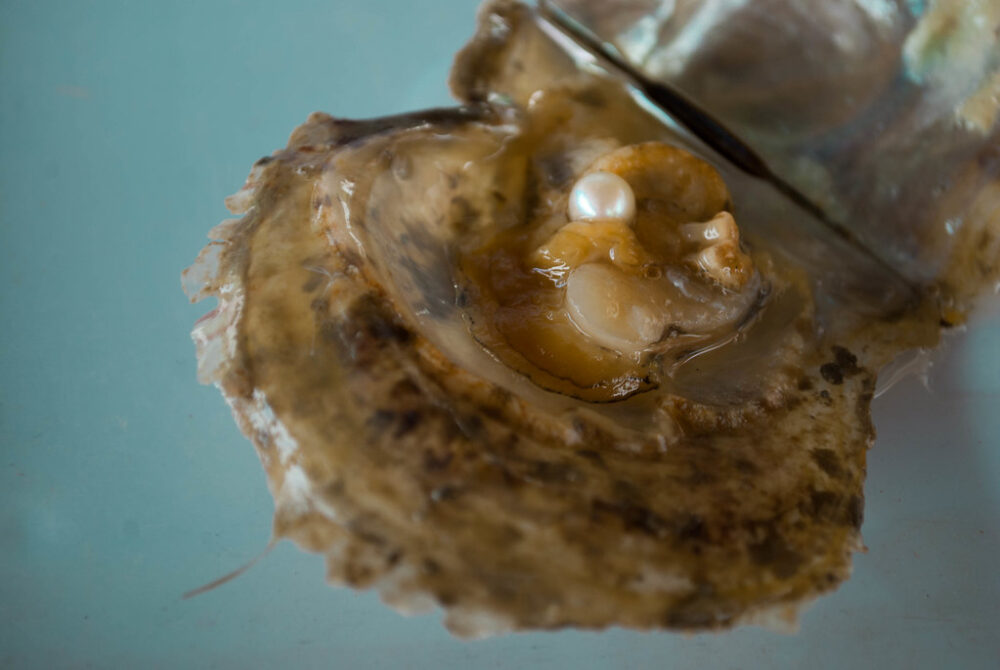The outsides of oysters appear rugged and dreary, but embedded inside lie beautiful, iridescent pearls. Their beauty has made them a sought-after object of vanity and aesthetics in the jewelry industry. However, this gem might be good for more than just earrings and necklaces; scientists are currently investigating its complex formation and how the organization of layers may give insight into creating the next supermaterial.
Pearls might seem useless to seawater oysters and freshwater mussels, but they have an evolutionary advantage as a defense mechanism. In response to a potential threat — like a parasite or a simple irritant, like a piece of sand or food — the sea creature will secrete aragonite and conchiolin that coat the foreign piece of matter. Aragonite is a type of mineral that is a special form of crystallized calcium carbonate, while conchiolin is a protein, but both are typically found in the shells of oysters and mussels. Together they combine to form a material called nacre, which has been deemed “the mother of pearl.”
The nacre is the organic-inorganic material that forms layers that gives the pearl its signature iridescent shine. Each layer of nacre is made up of many aragonite tablets and is typically only about 50 nanometers thick, which is 2,000 times thinner than the average human hair. Between each nacre are organic sheaths. These are responsible for the patterned, organized arrangement of the crystallized structure of the pearl and for keeping all the nacre layers bound together.
“Each layer of nacre is made up of many aragonite tablets and is typically only about 50 nanometers thick, which is 2,000 times thinner than the average human hair.”
In 2021 at the University of Michigan, Dr. Robert Hovden and other researchers began to investigate the formation of the pearls by observing and analyzing Akoya “keshi” pearls off the coast of Australia. They looked at how the nacre structure allows the pearls to withstand such high mechanical stresses and maintain high-resilience properties. During the initial formation, the particles of aragonite and subsequent layers of nacre are arranged in a nonuniform pattern with widely varying layer thicknesses.
Compared to the initial formation of nacre layers, the mature-stage layers have a threefold decrease in the thickness variation, which occurs when the diameter of the pearl reaches about 100 micrometers. This improvement is due to a corrective growth process that will arrange the layers over time into the proper crystalline structure. The oyster or mussel is able to achieve this by accounting for the irregularities and variability in the previous layer. For instance, if there is one layer that’s slightly too thick, the next layer will form thinner, allowing each layer to average together so the surface can become even. This process will occur again and again as multiple layers are built simultaneously with progressive thinning.
“They looked at how the nacre structure allows the pearls to withstand such high mechanical stresses and maintain high-resilience properties. During the initial formation, the particles of aragonite and subsequent layers of nacre are arranged in a nonuniform pattern with widely varying layer thicknesses. “
From this study, for the first time, scientists can now explain how oysters and mussels are able to create the layered, extremely durable material. Although pearls do not display perfect, long-range order characteristics — meaning that over a large set of layers, typically in the range of a thousand, the crystalline arrangement repeats itself — they do display medium-range order over the course of about 20 layers. Though not considered long-range order, the medium-range repeats still allow for the considerable durability and strength seen in the pearl layers.
Moving forward, now with a greater understanding of this structure formation, scientists can pursue further advancements in nanoscale layering materials. Previously, these incredibly small structures were extremely time-consuming to make because they were built periodically, one layer at a time, with each tablet carefully placed. But now that scientists have seen how pearls use a different strategy in which they are able to go from disorder to order through an ongoing, corrective process, they can look to nature for inspiration to hopefully improve current nanoscale materials to be stronger and lighter.
PNAS (2021). DOI: 10.1073/pnas.2107477118

